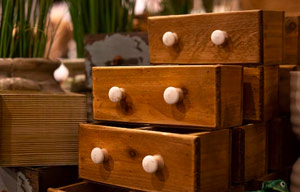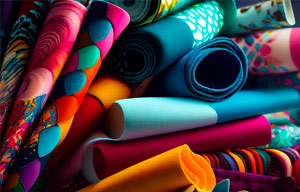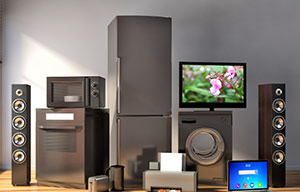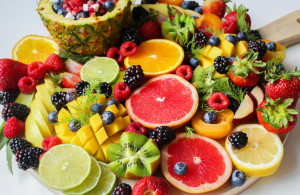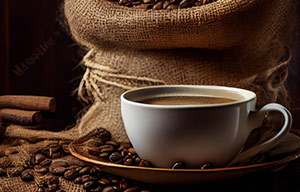Pemerintah Korea melalui lembaga Korea Forest Research Institute (KFRI) menerbitkan standar spesifikasi produk kayu. Standar ini diterbitkan dengan tujuan untuk mengkontrol kualitas produk kayu yang ada di pasar Korea mengingat 85% produk kayu Korea Selatan berasal dari impor.
- Untuk mengontrol produk kayu di pasaran, Pemerintah Korea Selatan melalui KFRI menerbitkan 2 Undang-undang yaitu (i) “Act on the Sustainable Use of Timbers” dan (ii) “Creation and Management of Forest Resources Act”.
- Hal teknis kualitas produk kayu, ditetapkan dalam “Standards and Specification of Wood Products” yang memuat 8 jenis produk kayu yaitu plywood, particle-board, fiberboard, wood pallets, wood chips, wood briquettes, charchoal dan pyroligneous acid.
Banyaknya kegunaan produk berbahan dasar kayu, pemerintah Korea memiliki lembaga standar, yaiu Korean Agency for Technology Standard (KATS).
Produk Korea Standard (KS) dibagi menjadi banyak bagian dan salah satunya adalah untuk produk kayu. Standar Korea (KS) tersebut memiliki informasi yang detail terkait produk berbahan dasar kayu untuk penggunaan tertentu.
Pemerintah Korea telah memulai sistem persyaratan kualitas pada produk kayu pada tanggal 1 Juli 2004. Berdasarkan Undang-Undang tentang promosi dan pendayagunaan sumber daya kehutanan dan Undang-Undang tentang promosi desa hutan dan gunung, setiap produk kayu yang digunakan harus disertai label khusus.
Sebuah lembaga yang dinamakan Korea Forest Research Institute (KFRI) bertanggung jawab atas pemenuhan kualitas produk kayu baik produksi dalam negeri maupun kayu import. Beberapa syarat kualitas yang ditentukan antara lain:
- Peringkat kayu kering
- Perawatan spesies kayu
- Mekanisme fiksasi untuk pengawetan kayu yang dirawat
- Kebocoran biosida dari kayu olahan ke lingkungan
- Pengembangan metode analitis untuk produk kayu
Kayu yang telah mengalami olahan dengan bahan tertentu akan menambah nilai kepadatan karbon dalam kayu yang digunakan untuk bahan material. Seperti yang diteliti oleh KFRI, sebuah kayu diperkirakan memiliki 50% emisi karbon. Untuk kayu “pitch pine”, emisi CO2 sampai periode pembusukan adalah 1,126 kg/m3. Oleh karena itu, kayu yang digunakan sebagai bahan bangunan di Korea Selatan perlu mengalami olahan yang tepat agar dapat digunakan dalam waktu yang lama.
Untuk produk kayu lapis, Pemerintah Korea juga menerapkan beberapa standar. Beberapa contoh Standar Korea untuk produk kayu lapis adalah sebagai berikut:
Plywood biasa (KS F 3101):
- Cara produksi : cara biasa, LFE(Low Formaldehyde Emission), tahan ngengat, tahan api
- Bahan perekat : Melamine Formaldehyde Glue for Exterior, Urea & Mixed Formaldehyde Glue for Exterior, dan Urea Formaldehyde Glue for Interior
- Kualitas : Level 1, Level 2
- Komposisi kayu : Plywood needleleaf (daun jarum), plywood broadleaf (daun lebar), kombinasi daun jarum dan daun lebar
Plywood concrete mold (Plywood cetakan beton) (KS F 3110)
- Proses pengolahan permukaan : biasa, diolah
- Kualitas : level 1, level 2
- Komposisi kayu : Plywood needleleaf (daun jarum), plywood broadleaf (daun lebar), kombinasi daun jarum dan daun lebar
Plywood special proof with decoration (KS F 3106)
- Cara produksi : cara biasa, LFE(Low Formaldehyde Emission), tahan ngengat, tahan api
- Bahan perekat : Melamine Formaldehyde Glue for Exterior, Urea & Mixed Formaldehyde Glue for Exterior, dan Urea Formaldehyde Glue for Interior
- Kegunaan : tipe-F (digunakan pada atap), tipe-FW (digunakan pada tembok biasa), tipe-SW (digunakan pada tembok khusus)
- Kualitas : Level 1, Level 2
Selain kualitas kayu dari hasil olahan, pemerintah Korea juga memiliki kriteria kualitas kayu alami. Kualitas kayu berdasarkan natur kayu dapat dilihat dari beberapa jenis kayu yang ada di Korea adalah sebagai berikut:
Jenis kayu dengan kerapatan dan kelembaban
| Jenis Kayu | Nama Latin | Kelas | Kerapatan (kgm-3) | Kelembaban (%) |
| Pitch Pine | Pinus rigida | Softwood | 419 | 10 |
| Chestnut Tree | Castanea sativa | Hardwood | 654 | 11 |
| Oak | Quercus acutissima | Hardwood | 928 | 14 |
| Zelkova | Zelkova serrata | Hardwood | 619 | 10 |
Beberapa karakteristik kayu alami lainnya adalah:
- Nilai kalori
- Nilai panas
- Tahan Gempa
Adapun standar yang perlu menjadi acuan untuk ekspor ke Korea Selatan adalah KS F
Standar Korea Terkini dari Asosiasi Kayu (Februari 2011)
| Nomor Standar | Nama Standar |
| KS F 1519 | Nominal sizes of sawn lumber |
| KS F 1551 | Terminology for wood-Properties and defects of wood |
| KS F 1552 | Standard terminology related to wood construction |
| KS F 1553 | Standard terminology related to wood-Log and sawn timber |
| KS F 1554 | Standard terminology related to wood-Nails and fasteners for wood structures |
| KS F 1555 | Standard terminology related to wood-Wood adhesion and plywood |
| KS F 1556 | Standard terminology related to wood-Preservative treatments for wood |
| KS F 1557 | Standard terminology related to wood-Engineered wood products |
| KS F 1611-1 | Fire resistance performance for elements of building construction-Part 1:Wall and floor/ceiling, roof/ceiling assemblies of light-frame wood structures |
| KS F 1611-3 | Fire resistance performance for elements of building construction-Part 3:Beams and columns made of structural glued laminated timber |
| KS F 2150 | Method of static bending test for full sized structural lumber |
| KS F 2151 | Visual grading for softwood structural lumber |
| KS F 2152 | Establishing allowable properties of softwood structural lumber |
| KS F 2153 | Testing method for lateral load resistance of mechanical timber joints |
| KS F 2154 | Method of shear(racking) resistance test for light-frame wood shear walls |
| KS F 2155 | Method of determination for preservatives absorption of treated wood |
| KS F 2156 | Method of dowel-bearing strength test for wood and wood-based products |
| KS F 2157-1 | Method of tension test for nonstructural wood-based panels |
| KS F 2157-2 | Method of tension test for structural wood-based panels |
| KS F 2158-1 | Method of compression test for nonstructural wood-based panels |
| KS F 2158-2 | Method of compression test for wood-based structural panels |
| KS F 2159-1 | Method of bending test for nonstructural wood-based panels |
| KS F 2159-2 | Method of bending test for structural wood-based panels |
| KS F 2160 | Determination of resistance to soaking delamination for adhesive-bonded wood products |
| KS F 2161 | Determination of resistance to surface checking for overlaid wood products |
| KS F 2162 | Adjustment factors applied to allowable stresses of structural timber and glued laminated timber |
| KS F 2163 | Measurement of sizes and determination of volume for sawlogs |
| KS F 2198 | Determination of density and specific gravity of wood |
| KS F 2199 | Determination of moisture content of wood |
| KS F 2200 | Wood-based panels-Determination of density |
| KS F 2201 | General requirements for testing of wood |
| KS F 2202 | Determination of average width of annual rings for wood |
| KS F 2203 | Method of shrinkage test for wood |
| KS F 2204 | Method of test for water absorption of wood |
| KS F 2205 | Method of hygroscopic test for wood |
| KS F 2206 | Method of compression test for wood |
| KS F 2207 | Method of tension test for wood |
| KS F 2208 | Method of bending test for wood |
| KS F 2209 | Method of shear test for wood |
| KS F 2210 | Method of cleavage test for wood |
| KS F 2211 | Method of impact bending test for wood |
| KS F 2212 | Method of hardness test for wood |
| KS F 2213 | Method of test decay for wood |
| KS F 2215 | Method of abrasion test for wood |
| KS F 2219 | Preservative treatments of woods by pressure processes |
| KS F 2220 | Preservative treatments of woods by thermal processes |
| KS F 2221 | Test method of impact for building boards |
| KS F 2227 | Method of creep test for wood |
| KS F 2228 | Method of inflamability test for wood |
| KS F 2258 | Method of fire test for wooden structural parts of buildings |
| KS F 2260 | Method of plastering cement mortar for fire protection of wooden buildings |
| KS F 2263 | Method of bending test for boards of buildings |
| KS F 2605 | Test methods for moisture resistance of board for interior system of building |
| KS F 2606 | Test methods for water resistance of exterior wall boards in building |
| KS F 3005 | Crossties treated with creosote oil by pressure processes |
| KS F 3020 | Softwood structural lumber |
| KS F 3021 | Structural glued laminated timber |
| KS F 3022 | Edge-glued lumber |
| KS F 3023 | Finger jointed wood |
| KS F 3024 | Medium Density Fiberboard(MDF) door frames |
| KS F 3025 | Foundation wood sill treated with preservatives by pressure processes |
| KS F 3026 | Wood for floor decking treated with preservatives by pressure processes |
| KS F 3027 | Wooden box beam |
| KS F 3028 | Wood for outdoor facilities treated with preservatives by pressure processes |
| KS F 3101 | Ordinary plywood |
| KS F 3103 | Flooring board |
| KS F 3104 | Particle boards |
| KS F 3106 | Prefinished, printed, embossed & paper overlaid plywood |
| KS F 3107 | Sliced veneer overlaid plywood |
| KS F 3108 | Wooden frames for doors and windows |
| KS F 3109 | Door sets |
| KS F 3110 | Plywood for concrete form |
| KS F 3111 | Natural wood veneer flooring board |
| KS F 3113 | Structural plywood |
| KS F 3117 | Window sets |
| KS F 3118 | Nonstructural glued laminated timber |
| KS F 3119 | Nonstructural laminated veneer lumber |
| KS F 3122 | Floor frame timber treated with preservatives by pressure processes |
| KS F 3123 | Flooring block |
| KS F 3124 | Slow-burning lumbers |
| KS F 3125 | Polystyrene composite wood wool cement boards |
| KS F 3126 | Decoration wood-based flooring board |
| KS F 3127 | Plastic laminated or printed boards for inside use |
| KS F 3128 | Door skin |
| KS F 3129 | Wooden wall plank |
| KS F 3200 | Fiberboards |
| KS F 3230 | WPC(Wood Plastic Composite) deck floor board |
| KS F 4720 | Wood wool boards |
| KS F 4725 | Building components wood panel for wall |
| KS F 4770-4 | Soundproof panel-Wood |
| KS F 9008 | Standard practice for construction of connections between glued-laminated timber members |
| KS F 9010 | Construction standard for non-loadbearing wall of light-frame wood structure |
| KS F ISO 16979 | Wood-based panels-Determination of moisture content |
| KS F ISO 16983 | Wood-based panels-Determination of swelling in thickness after immersion in water |
| KS F ISO 16985 | Wood-based panels-Determination of dimensional changes associated with changes in relative humidity |
| KS F ISO 16987 | Wood-based panels-Determination of moisture resistance under cyclic test conditions |
| KS F ISO 16998 | Wood-based panels-Determination of moisture resistance-Boil test |
| KS F ISO 16999 | Wood-based panels-Sampling and cutting of test pieces |
| KS F ISO 4473 | Coniferous and broadleaved tree sawlogs-Visible defects-Classification |
| KS F ISO 4475 | Coniferous and broadleaved tree sawlogs-Visible defects-Measurement |
| KS F ISO 737 | Coniferous sawn timber-Sizes-Methods of measurement |
| KS F ISO 8904 | Broadleaved sawn timber-Sizes-Methods of measurement |
| KS F ISO 9087 | Determination of nail and screw holding power under axial load application for wood (KS F 2214) |
| KS F ISO 9424 | Wood-based panels-Determination of dimensions of test pieces |
| KS F ISO 9426 | Wood-based panels-Determination of dimensions of panels |
| KS P 8401 | Wooden axilla crutches |
Standar Korea Terkini dari Asosiasi Kayu untuk Produk dan Sertifikasi (Feb. 2011)
| Nomor Standar | Nama Standar | Jumlah Perusahaan Tersertifikasi |
| KS F 3109 | Door sets | 20 |
| KS F 3111 | Natural wood veneer flooring board | 19 |
| KS F 3103 | Flooring board | 17 |
| KS F 3126 | Decoration wood-based flooring board | 15 |
| KS F 3200 | Fiberboards | 6 |
| KS F 3110 | Plywood for concrete form | 5 |
| KS F 3021 | Structural glued laminated timber | 3 |
| KS F 3101 | Ordinary plywood | 3 |
| KS F 3104 | Particle boards | 3 |
| KS F 3123 | Flooring block | 3 |
| KS F 3005 | Crossties treated with creosote oil by pressure processes | 3 |
| KS F 3117 | Window sets | 2 |
| KS F 3122 | Floor frame timber treated with preservatives by pressure processes | 2 |
| KS F 3026 | Wood for floor decking treated with preservatives by pressure processes | 1 |
| KS F 3028 | Wood for outdoor facilities treated with preservatives by pressure processes | 1 |
| KS F 3118 | Nonstructural glued laminated timber | 1 |
| KS F 3129 | Wooden wall plank | 1 |
| Total | 17 buah | 105 |
| Nomor Standar | Nama Standar | Jumlah Perusahaan Tersertifikasi |
| KS F 3022 | Edge-glued lumber | 0 |
| KS F 3023 | Finger jointed wood | 0 |
| KS F 3025 | Foundation wood sill treated with preservatives by pressure processes | 0 |
| KS F 3027 | Wooden box beam | 0 |
| KS F 3106 | Prefinished, printed, embossed & paper overlaid plywood | 0 |
| KS F 3107 | Sliced veneer overlaid plywood | 0 |
| KS F 3108 | Wooden frames for doors and windows | 0 |
| KS F 3113 | Structural plywood | 0 |
| KS F 3114 | --- Withdrawn --- | 0 |
| KS F 3124 | Slow-burning lumbers | 0 |
| KS P 8401 | Wooden axilla crutches | 0 |
| Total | 11 buah | 0 |
Selain aspek-aspek di atas, pemerintah Korea juga memperhatikan aspek manfaat dari produk kayu. Beberapa manfaat produk kayu selain sebagai furnitur dan kegunaan yang disebutkan di atas, ada pula kegunaan lain untuk penahan longsor dari kayu dan pemanas.
Ada 5 hal manfaat dalam menggunakan material kayu sebagai bahan bangunan (studi kasus pembuatan penahan longsor dari kayu).
- Material alami: Menggunakan kayu tipis dan mampu memotong tanah dan batu-batuan
- Stabilitas tinggi: Rangka yang terstruktur memberikan stabilitas tinggi
- Durabilitas tinggi: Pengolahan kayu memberi kepastian daya tahan kayu yang semi-permanent
- Masa pemasangan cepat: Pemasangan penahan longsor dengan bahan beton memakan waktu 40 hari. Sedangkan pemasangan penahan longsor dengan bahan kayu membutuhkan waktu 10 hari.
- Keamanan tinggi: Bahan kayu memiliki bahan yang ramah lingkungan
Bangunan Interior di Korea Selatan juga banyak menggunakan Maru (lantai kayu) dan Ondol (pemanasan lantai dengan mengalirkan air panas). Ondol inilah yang menjadi ide untuk pemanasan lantai rumah modern saat ini.


